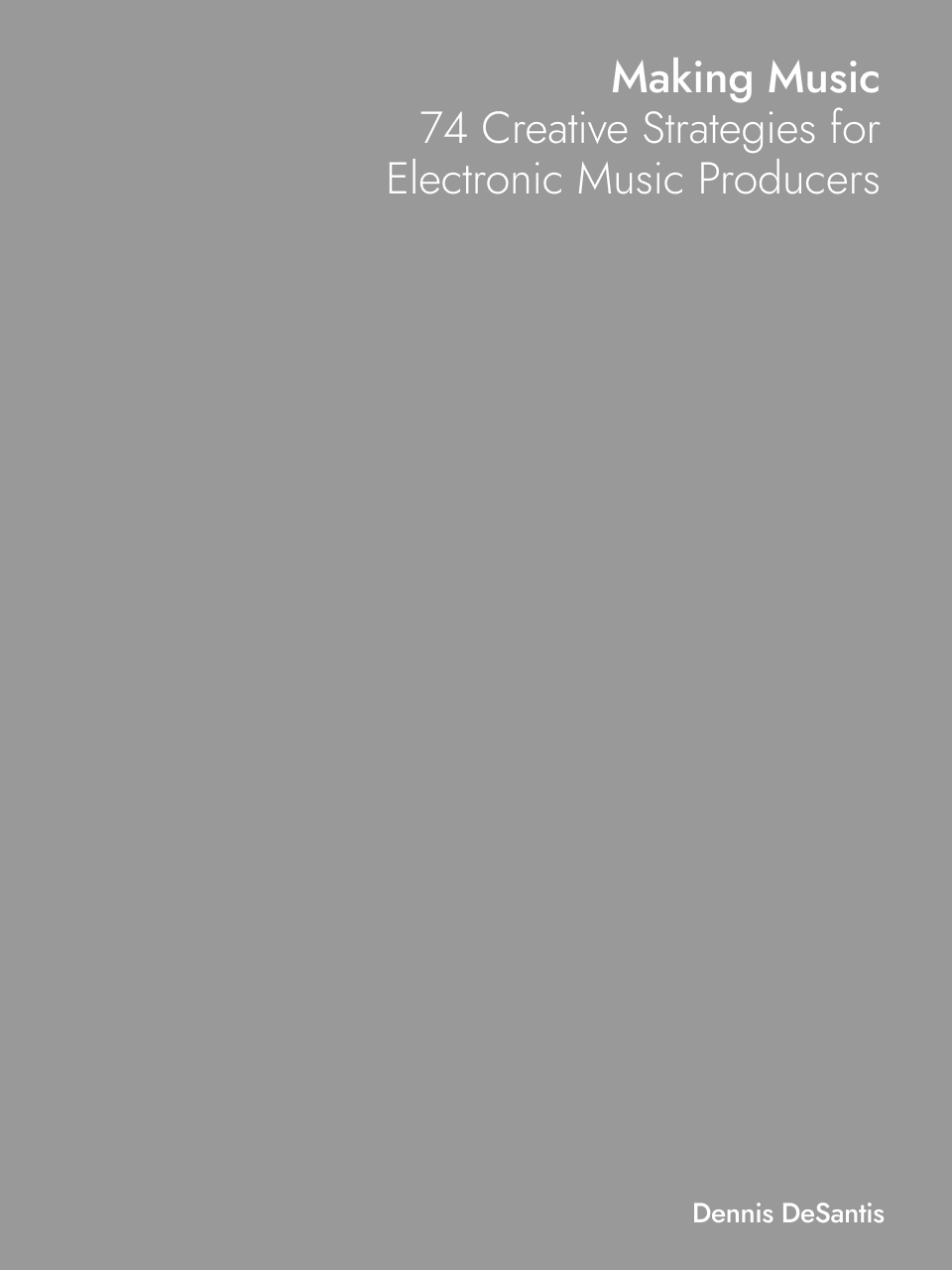Making Music: 74 Creative Strategies for Electronic Music Producers
by Dennis DeSantis
Added:
Jun 3, 2023
Book Description
For many artists, nothing inspires more existential terror than actually making art. The fear that we’re not good enough or that we don’t know enough results in untold numbers of creative crises and potential masterpieces that never get realized. Electronic musicians used to be able to hide behind clunky, emerging technology as an excuse for inaction. But musicians today live in a golden age of tools and technology. A ninety-nine-cent smartphone app can give you the functionality of a million-dollar recording studio. A new song can be shared with the world as soon as it’s finished. Tutorials for every sound design or music production technique can be found through a Google search. All of these developments have served to level the playing field for musicians, making it possible for a bedroom producer to create music at a level that used to be possible only for major-label artists. But despite all of this, making music is still hard. Why? Making Music was written both to answer this question and to offer ways to make it easier. It presents a systematic, concrete set of patterns that you can use when making music in order to move forward. It will teach you how to make music using technology, with a specific emphasis on solving musical problems, making progress, and (most importantly) finishing what you start.
Notes & Highlights
Creating Variation 1: Mutation of Clones
Duplicate the initial idea a number of times (maybe eight or so) so that you have a number of identical copies. Edit the first duplicate until you have made only one meaningful change.
After making your one meaningful change to the first duplicate, move to the second duplicate and again make one meaningful change.
Repeat this process until you’ve made one meaningful change to each of the copies.
What you have now is a collection of “siblings,” each of which is a direct descendant of the “parent” idea. Because you’ve made only one meaningful change to each duplicate, the relationship to the original will be clear.
Creating Variation 2: Mutation Over Generations
Make a single duplicate of the initial idea. Edit this duplicate until you have made only one meaningful change. You’ll ultimately need to use your own taste and intuition to determine what “meaningful” means in the context of this particular idea.
Once you’re satisfied with the change that you’ve made to the duplicated idea, repeat the process. But this time, begin by creating a duplicate of the duplicate (rather than the original). Now make one meaningful change to this third-generation duplicate. Try not to go “backwards”; that is, don’t simply undo the change that you made in the previous generation. Continue this process a number of times (maybe eight or so), each time using the previous variation as the seed for the next one.
What you have now is a collection of “descendant” ideas, each of which is the direct offspring of the previous idea, but which can all be traced back to the original “ancestor.” Although you’ve made only one meaningful change to each idea, all of them have also inherited the changes from all of the preceding generations and so may become increasingly remote from the original ancestor.
Asynchronous or Polyrhythmic Loops
Instead of triggering an instrument with a single clip, try simultaneously triggering it with multiple clips of different lengths.
Misusing Rhythmic Tools
Although these are some examples for how to misuse specific workflows, consider applying this approach to all of your tools. Any effect, instrument, or workflow can potentially yield interesting results when used in unusual ways. Learn what your tools are supposed to do, but don’t be afraid to make them do something else.
Maximal Density
Once you have this peak section, you can make duplicates of it and then try out various lower-density versions of the same basic material by muting or deleting various elements or tracks and auditioning the result. Each time you find a combination that you like, copy and paste it so that it becomes a new song section. The act of arranging, then, is just a matter of organizing these sections of varying density in an order that makes sense with the ebb and flow that you want for the song.
Get a copy
